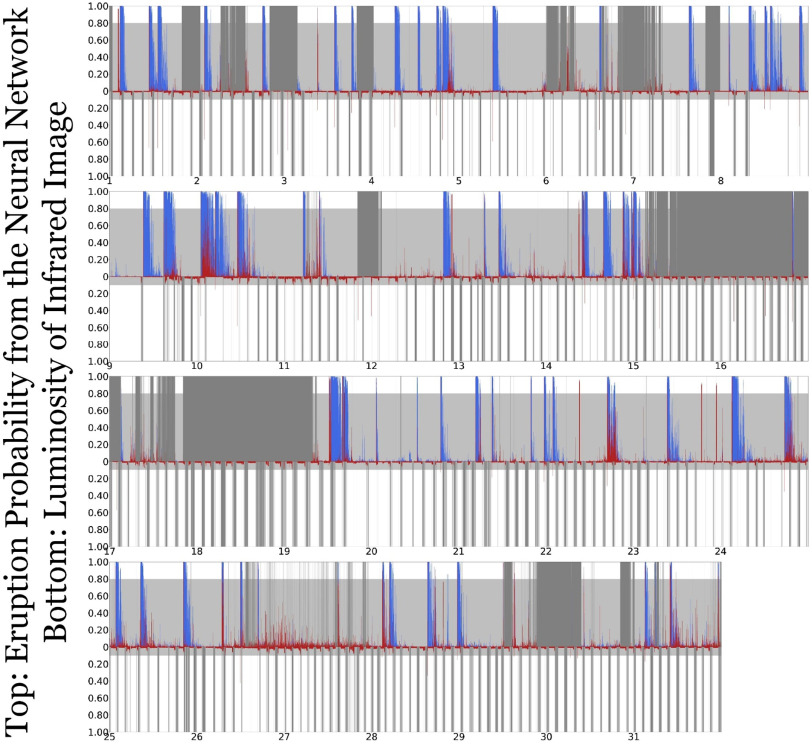Faculty Member Publishes Article on Identifying Volcanoes via Machine Learning
Tue, 05/26/2020 - 5:48pmDr. Gabriele Morra and Brian Dye (a former Geology graduate student, currently at the EPA), have just published an article in Physics of the Earth and Planetary Interiors on the first machine learning algorithm able to automatically detect Strombolian eruptions from infrared images. The publication is available here. This is an example that reflects the ongoing collaboration between the Department of Physics and the School of Geosciences at UL Lafayette.

Comparison of categorization utilizing machine learning on infrared images through the month of January 2014 on top and seismic cross-correlation bottom. Y-axis represents the probability of the categorizations for machine learning (top half) and correlation for seismic cross-correlation (bottom half). X-axis represents the day of the month in January with 8 days a week for the first 3 weeks and 7 days in the last week. The red lines indicate eruptions in results from machine learning and seismic cross-correlation. The blue lines in the top indicate the ‘Post Eruption’ categorization. Dark gray represents periods when the devices were not operational and light gray indicates results below the confidence threshold. Large eruptions typically leave behind more lava in the crater to cool and hotter eruptions also take longer to cool. Therefore, the increased cooling time prolongs the period categorized as ‘Post Eruption’. (For interpretation of the references to colour in this figure legend, the reader is referred to the web version of this article.)
